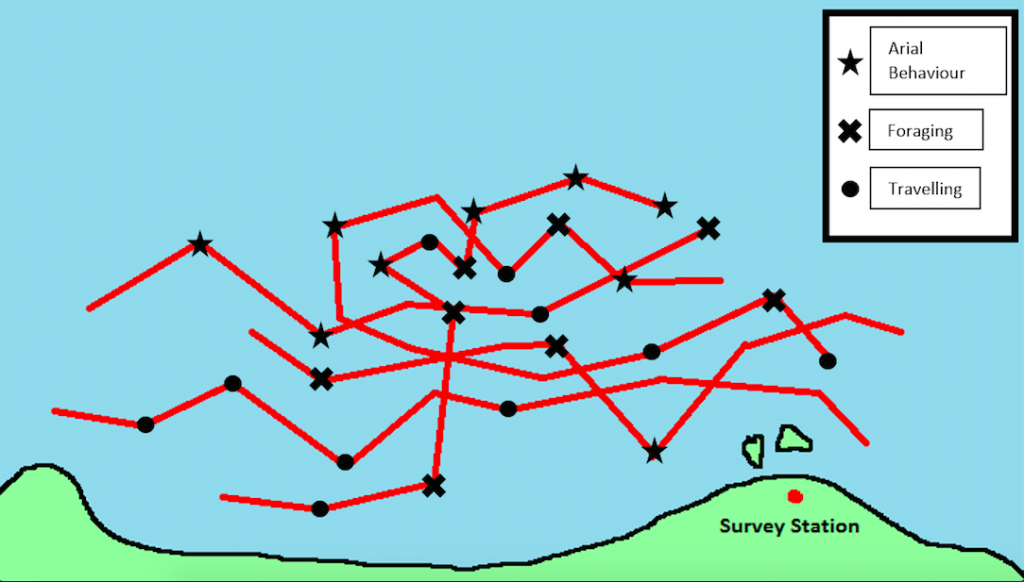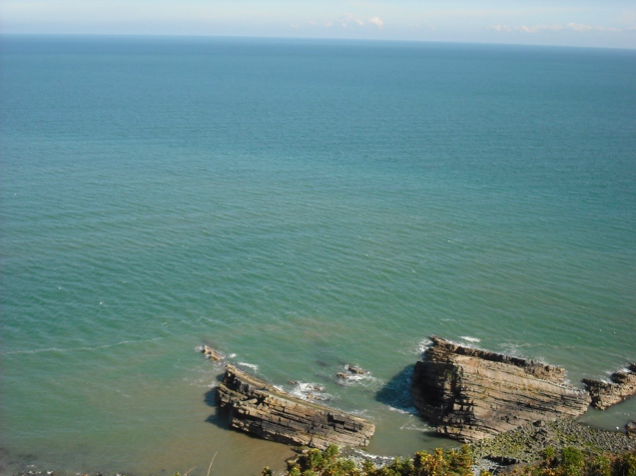Sea Watch Foundation offers the opportunity to work with students completing MSc and BSc thesis each year. To find out how you can complete a student project with Sea Watch Foundation click Here. This is a guest blog by one of our 2015 BSc students from Plymouth University currently studying Marine Biology and Coastal Ecology.
Every survey day myself and Dom trek up the cliff with the theodolite gear to the survey site above Target Rock in New Quay. For around 6 hours we stay up there collecting environmental data every 15 minutes and track dolphins which enter the survey area around us, noting their behaviour, group size and if they are adults or juveniles. The theodolite gives the horizontal and vertical angles of the sighted dolphin, so we may determine the coordinates and locate them on mapping software. Multiple location points can be joined up to form a dolphin track line– essentially an electronic version of dot-to-dot.
Data collection so far seems to be the easy part. The first hurdle to overcome has been processing data and using a novel piece of software. Entering this data into the program has led to some very stressful hours spent in the office. Error message boxes appear left, right and centre stating we cannot perform our task. As time goes by, stress levels rise, more boxes are clicked randomly to try to get the data correct, but finally, with some help, the data was entered and the error messages eventually subside! – we just need to remember how we did it, once the field season is over and data analysis begins.
If vessels come through our survey area, and we are not kept busy with dolphins, boat tracks are recorded. This is to try and determine area use by the vessels and compare with our dolphin tracks, seeing if there are any correlations between the two. Previous studies have shown dolphins may retreat to shallower waters during avoidance of a vessel. Comparing the dolphin spatial and behavioural distribution to the benthic sediment type and morphology will also give us more information about how they use the environment around New Quay. Another environmental factor that may also have a positive impact on distribution of dolphins within the survey area is the temporal distribution of wastewater from the fish processing plant. This may cause small organisms to feed in the zone around the plant, thus leading to an influx in predator prey relationships, eventually moving up the trophic levels to the apex predator – dolphins!
Environmental data collection is important, even if there are no dolphins. So far around 20 hours have been collected, with a goal of collecting around 300. We have had 18 individual sightings and many cups of coffee, so here’s to the summer ahead!
Written By Katie Drake – Plymouth University BSc Student 2015


























